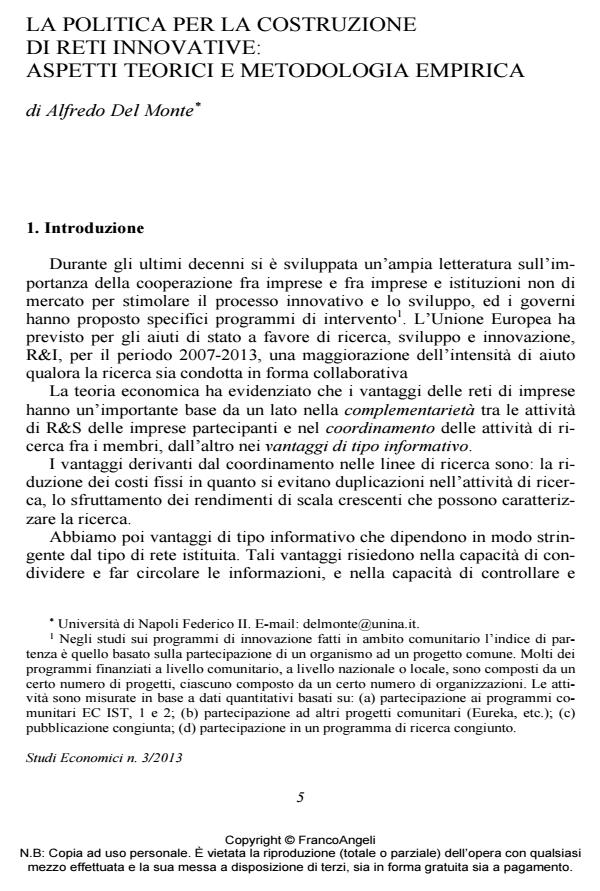The policy to create innovation networks: methodological and empirical aspects
Journal title STUDI ECONOMICI
Author/s Alfredo Del Monte
Publishing Year 2015 Issue 2013/111
Language Italian Pages 19 P. 5-23 File size 96 KB
DOI 10.3280/STE2013-111001
DOI is like a bar code for intellectual property: to have more infomation
click here
Below, you can see the article first page
If you want to buy this article in PDF format, you can do it, following the instructions to buy download credits

FrancoAngeli is member of Publishers International Linking Association, Inc (PILA), a not-for-profit association which run the CrossRef service enabling links to and from online scholarly content.
In this paper we have shown how social network analysis could be used to evaluate the opportunity that government subsidize Innovative Networks (NPP policy). Our analysis are has shown that social network methodology could be helpful to evaluate the efficiency of transfer of information in different networks but does not allow a clear evaluation of the policy toward innovative networks. In this paper the experience of Italian policy toward technological industrial districts has been discussed and social network analysis applied to evaluate the ex post results of this policy. Two are the main results of our analysis. The first one is that we have shown the necessity to integrate the social network index with a more appropriate to measure the welfare effects of NPP policy.The second one is that we have not found clear effects of the policy toward innovative networks in Southern Italy.
Keywords: Innovative Networks, Government Policy, R&D cooperation.
Jel codes: O30, O32, L13
Alfredo Del Monte, La politica per la costruzione di reti innovative: aspetti teorici e metodologia empirica in "STUDI ECONOMICI " 111/2013, pp 5-23, DOI: 10.3280/STE2013-111001